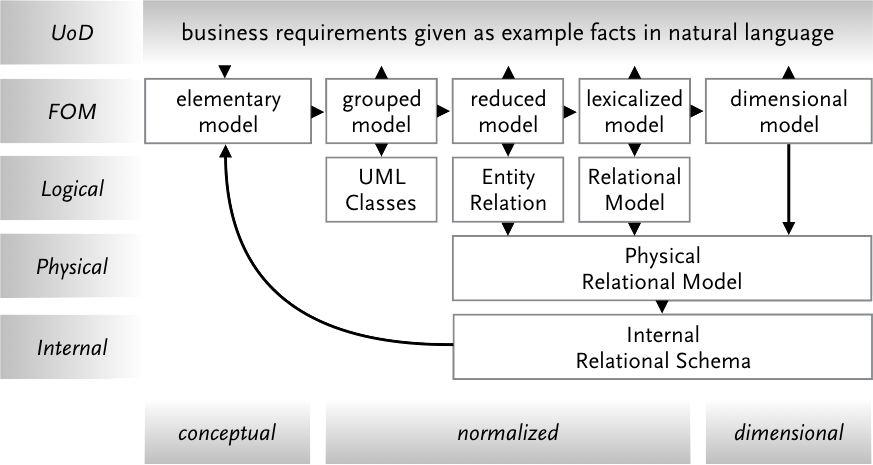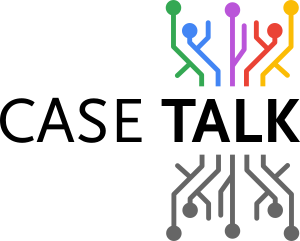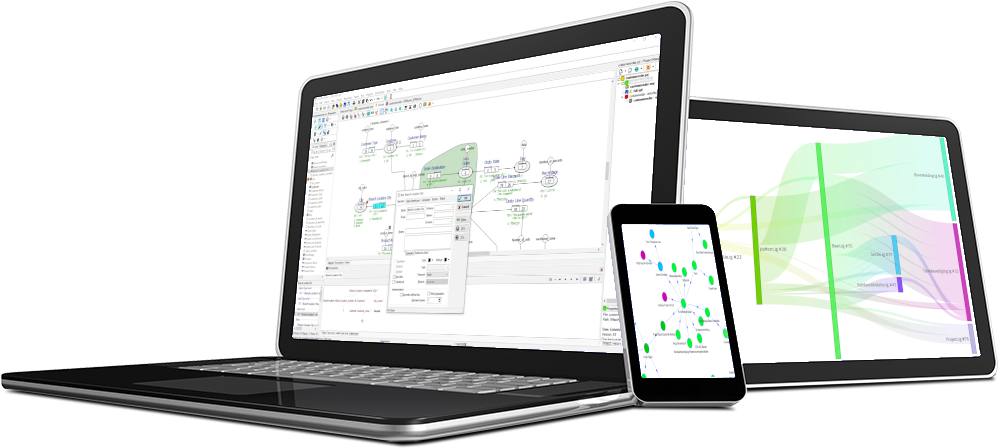Information architecture distinguishes between different layers and compartments, each with specific models. The compartments are then ordered and their models aligned. This article described the compartments and models influenced by CaseTalk and by Fact Based Modeling.
The schema below shows the Universe of Discourse (UoD); the Fact Oriented Modeling (FOM); and the more familiar logical, physical, and internal layers. You may follow several paths from the UoD down to Internal Schemas, or go from Internal Schema up to the Elementary Model by using reverse engineering.
CaseTalk Modeler has capabilities to transform its models through Grouping, Reducing, and Lexicalizing. You may read more about this when searching the documentation and web for transformations. As long as the compartment is inside the FOM, CaseTalk can reproduce the original fact expressions at any time so users can validate the conceptual, normalized, and dimensional model.
Going down a layer from FOM to Logical, CaseTalk has built-in features that can generate files, scripts, or other artifacts. The CaseTalk Viewer is able to visualize this logical layer. To further descend towards physical external tooling is required, such as ER CaseTools, for which the Modeler has some support through scripting.

We have an alternative if you are more familiar with Zachman.


